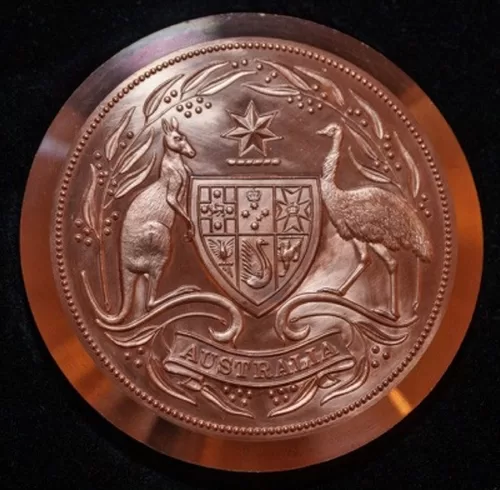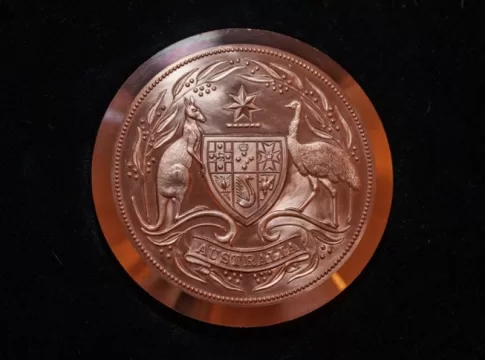The Great Seal of Australia: A New Chapter in History
The Great Seal of Australia stands as a symbol of authority and continuity, integral to the nation’s legal and constitutional framework. Used to authenticate critical government documents, the seal is a powerful representation of the Governor-General’s authority as the King’s representative. This month, history unfolded as Australia ushered in a new era for the Great Seal.
A Historic Moment: A New Seal Granted
On 21 October 2024, His Majesty King Charles III authorized the use of a new Great Seal of Australia. The moment was marked by the presence of the Governor-General of Australia and the Prime Minister, who joined the King for the historic occasion. The new seal was granted under two Royal Warrants: one for its use as the Great Seal of Australia and the other as a Royal Great Seal for documents that require the Sovereign’s personal signature.

The decommissioning of the former Great Seal of Australia—which was authorized by Queen Elizabeth II in 1973—took place on 24 October 2024 in a ceremonial event led by the Governor-General. This transition underscores the evolution of Australia’s identity under its new monarch.
Design of the New Great Seal
The new Great Seal of Australia features the Australian Coat of Arms, symbolizing the nation’s unity and heritage.


Encircled by a laurel of golden wattle—Australia’s national floral emblem—the design reflects both tradition and a connection to the country’s natural beauty.
The Australian Coat of Arms, central to the seal, was first issued under Royal Warrant by King George V on 19 September 1912.
This emblem includes:
- A shield divided into six parts representing the six states.
- A kangaroo and an emu as supporters, unique symbols of Australia.
- A Commonwealth Star above the shield.
- A scroll with the word “Australia” beneath.
The History of the Great Seal
The Great Seal of Australia was established under the Royal Seals Act 1955, which enabled its creation and set its legal framework. Prior to this, Australia used a seal provided by the British monarch. The Act symbolized Australia’s increasing autonomy as a nation.
This is the seventh iteration of the Great Seal since the Commonwealth of Australia was established. The journey began with Queen Victoria’s letters patent in 1900, which paved the way for the first Great Seal, approved by King Edward VII in 1903. That initial seal featured the British Coat of Arms surrounded by the shields of the Australian states, reflecting the close ties between Britain and its then-new dominion.
Subsequent versions of the seal included:
- 1912: Authorized by King George V.
- 1938 and 1948: Authorized by King George VI.
- 1954 and 1973: Authorized by Queen Elizabeth II.
The 1973 seal, in particular, marked a significant step in reflecting Australia’s growing national identity. With its decommissioning, the new Great Seal continues this legacy, tailored to the reign of King Charles III.
Distinction from State Seals:
Each Australian state has its own seal for state-specific official purposes, but the Great Seal of Australia is used for national and Commonwealth matters.
Advertisement:
The Role of the Great Seal
The Great Seal of Australia plays a crucial role in validating and formalizing important legal and governmental documents. It signifies the official approval or authority of the Governor-General. The Great Seal is under the care of the Governor-General, and it reflects the Governor-General’s constitutional and ceremonial role as the King’s representative in Australia.
Typically, the Governor-General affixes the seal to:
- Proclamations.
- Appointments of ministers.
- Other key instruments that require the imprimatur of the Crown.
The Royal Great Seal, authorized alongside the new Great Seal, will be used by the Sovereign for documents that necessitate personal approval.
A Symbol of Authority and Heritage
The Great Seal of Australia is a symbol of the authority of the Commonwealth of Australia, primarily used for official purposes. Its primary function is to authenticate important government documents, such as proclamations, appointments of ministers, and other formal legal instruments issued by the Governor-General on behalf of the Crown.
The introduction of the new Great Seal is not just a procedural update; it is a reflection of Australia’s constitutional framework and its enduring connection to the Crown. The carefully designed seal encapsulates the nation’s history, its symbols, and its place within the Commonwealth.
As King Charles III’s reign begins to leave its mark, the new Great Seal of Australia serves as a reminder of the continuity and evolution of a nation. It stands as a testament to Australia’s rich heritage while embracing the future with a design that celebrates the country’s unique identity.
Related stories
Grattan on Friday: Welcome King Charles, farewell a republic
Heads or tails? His Majesty King Charles III new coin effigy
Letter from Julian Assange to King Charles III
Biden, King Charles & capitalists meet COP28 President
Australian Pre-Decimal Coins ° Australian Penny
Aboriginal Warrior Pemulwuy and the Fight for Repatriation
How I shot the Queen ° CHOGM 2002 Official Queen’s Portrait
Advertisement:



